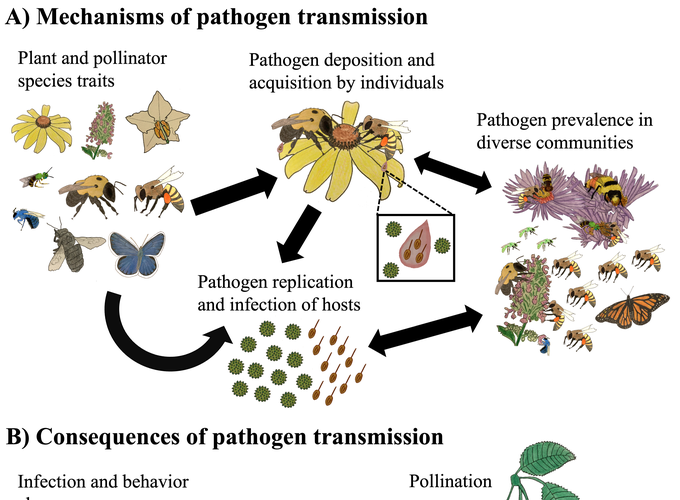 Image credit: Page et al. (2025)
Image credit: Page et al. (2025)
 Image credit: Page et al. (2025)
Image credit: Page et al. (2025)
Infectious disease is a major driver of biodiversity loss, but how disease threatens pollinator communities remains poorly understood. Here, we review the plant–pollinator–pathogen literature to identify mechanisms by which plant and pollinator traits and community composition influence pathogen transmission and assess consequences of transmission on plant and pollinator fitness. We find that plant and pollinator traits that increase floral contact can amplify transmission, but community-level factors such as plant and pollinator abundance are often correlated and can counteract one another. Although disease reduces pollinator fitness in some species, little research has assessed cascading effects on pollination, and taxonomic representation outside of honey bees and bumble bees remains poor. Major open challenges include (a) disentangling correlations between plant and pollinator abundance to understand how community composition impacts pathogen transmission and (b) distinguishing when pathogen transmission results in disease. Addressing these issues, as well as expanding taxonomic representation of pollinators, will deepen our understanding of how pathogens impact diverse pollinator communities.